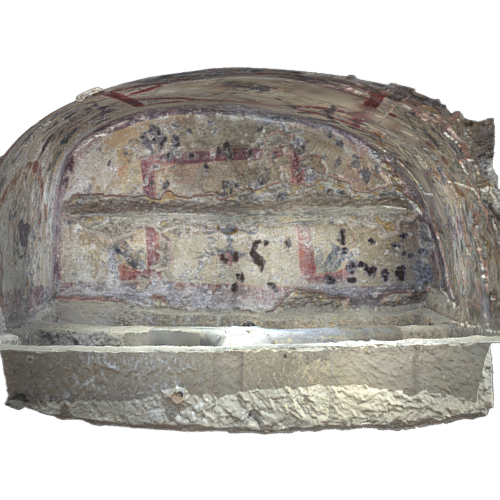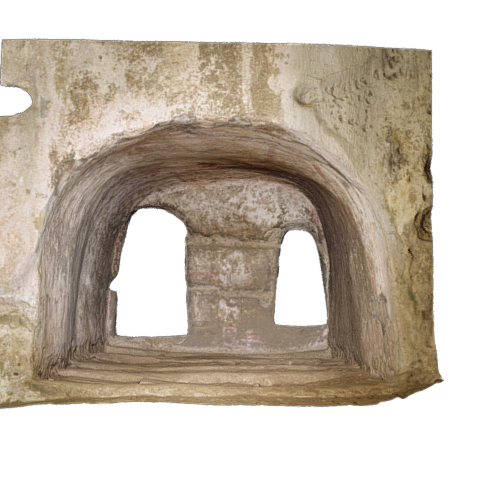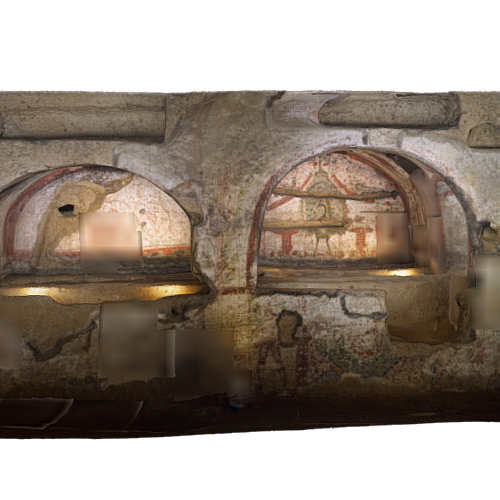In the 8th century, 3 independent burial chambers were combined to create the “San Agrippino chapel” (2 rooms are apparently from the 3rd century; from the 5th century is a child’s burial niche with mosaic). The calottes of 3 former arched burial niches were used as arches of a triforium that separates the nave from the chancel (with altar, 2 “arcosolia”, and bishop’s chair). The nave is decorated with early medieval paintings of male saints. 1 of the frescoes is striking: Due to an inscription, we can identify a miracle of “Agrippino” (reported in a text source from the 10th century): The 2. city patron is seemingly healing a certain Mauro.
The descriptions were provided by Seniorprofessor Dr. Dieter Korol, Westfälische Wilhelms-Universität Münster.




